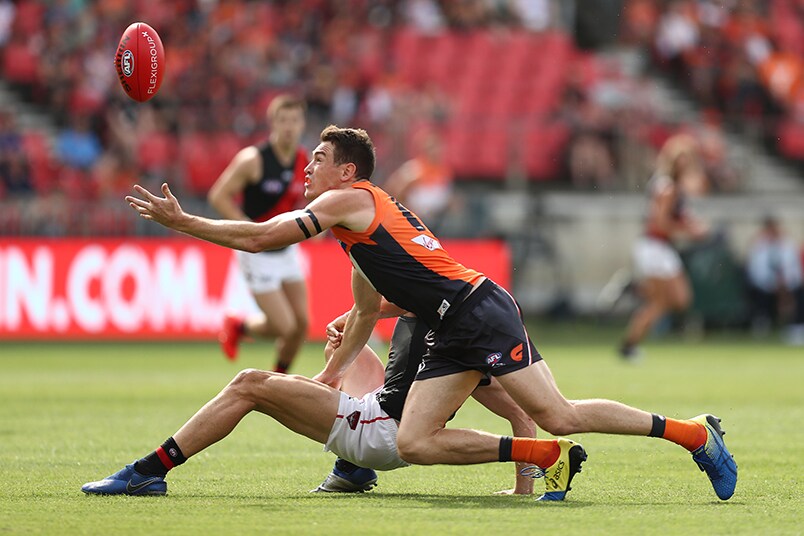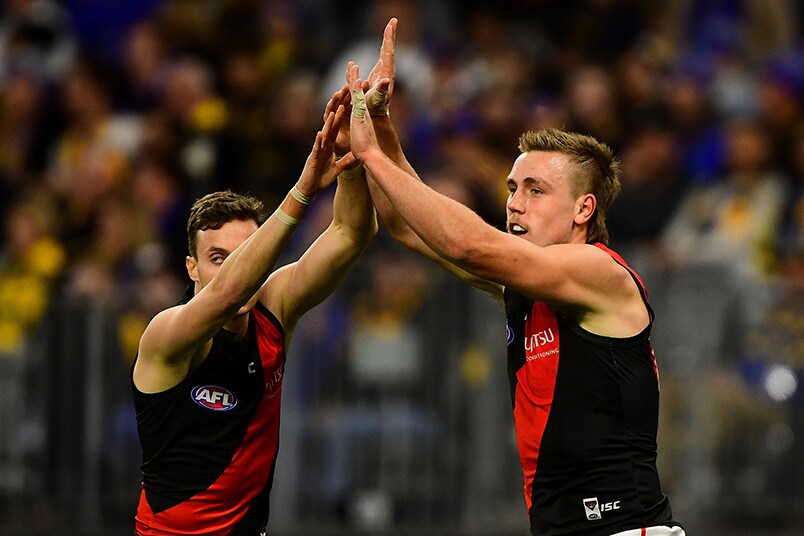Crunch time for Essendon has arrived. It may only be round 15, but the Bombers’ finals hopes are hanging by a thread, with a win over Greater Western Sydney on Thursday night a non-negotiable.
At 6-7 and in 10th spot on the AFL ladder, Essendon is already one game plus eight percentage points outside the top eight.
Another loss this week and the Dons, with the teams immediately above them (Richmond, Fremantle and Port Adelaide) all favoured to win, could conceivably be two games off the pace, needing seven wins from their last eight games even to be a finals chance.
Victory won’t come easily. GWS is fresh after a bye, has won four of its past five games, sits third on the ladder with a 9-4 record, and cleaned up the Dons back in round one.
The stakes are huge. And these are the questions Essendon will need to answer in a positive fashion to keep the September dream alive.
1. What did we learn from our round one clash against the Giants?
That we’re up against a seriously good team. GWS is third on the ladder at 9-4 and with the second-best percentage in the competition. The Giants are ranked second for points scored, are second for fewest points conceded, are efficient up forward, averaging goals from nearly 27 per cent of their inside 50 entries, and rank No.1 in the AFL on the differentials for both contested and uncontested possession.
The 72-point defeat at the hands of the Giants in the first game of the season also came against a team missing its biggest midfield star in Josh Kelly. GWS dominated both inside and outside the contest, winning contested ball by 40 and uncontested by 37, and took 16 marks inside 50, where Jeremy Cameron and makeshift forward Lachie Keeffe shared seven goals.
Essendon was forced into hurried and erratic disposal going forward, where Shaun McKernan and Mitch Brown struggled to have any impact. In short, it was a shellacking in which the Bombers’ intensity was sadly lacking. That’s just one area which will have to improve in order for a different result this time.
2. How do we keep the GWS forward line in check?
It won’t be easy. The Giants have scored more so far this season than any side bar Geelong, going at an average 95 points per game. That’s close to two goals per game better than last year and comes despite the absence for five games of star small forward Toby Greene.
GWS has discovered a dangerous forward set-up even without injured star Jonathon Patton, thanks to the emergence of Jeremy Finlayson in a key forward role, the continued development of Harry Himmelberg and the return of Jeremy Cameron to his best. That trio have combined for nearly 90 goals, Cameron leading the Coleman Medal with just on three goals per game.
Like last week against West Coast, the match-ups will be difficult, the Giants’ key forwards if anything even more mobile than the Eagles’. Patrick Ambrose could potentially end up taking Cameron, leaving Cale Hooker and Michael Hurley with the other GWS pair. But much of the defensive plan will also be about limiting the Giants’ scoring opportunities further afield. Those 32 scoring shots and 16 marks inside 50 last meeting were in no small part through Essendon’s failure to exert sufficient midfield pressure.

Jeremy Cameron will need to be stopped on Thursday night. (Photo: AFL Photos)
3. And how do we go about getting more productivity from our own forward line?
We’ve said before this season, continuity has been a major issue. Injuries to key forward personnel simply haven’t allowed the forward group to settle down and gel at any stage, Jake Stringer’s leg injury the latest to throw a spanner in the works. But you simply have to work with what you’ve got. Sometimes it’s been about conversion. Last week it was about supply, just 40 inside 50s simply not enough to concoct a winning score, nor only eight marks inside 50.
Josh Begley and Jayden Laverde battled hard last week, but they will be desperate for more marking support against the Giants, Mitch Brown and Shaun McKernan having taken just one contested grab between them against the Eagles.
Far more is also required when the ball hits the ground. Orazio Fantasia was unusually subdued last week, Anthony McDonald-Tipungwuti quiet again, and arguably the most damning statistic of the match was Essendon’s meagre two tackles inside 50, less than a quarter of their average of 9.2.
The quality of the delivery inside 50 will be crucial, and much will be dependent upon the midfield to win quick, clean possession, offering the forwards space and avoiding having to bomb the ball in.

Josh Begley is coming off a three-goal performance against the Eagles. (Photo: AFL Photos)
4. Isn’t it time we put up a decent performance against a top team?
Sure is. Essendon is 2-4 against the current top eight this season, but tellingly, 0-4 against the top four. And three of those four defeats have been comprehensive, by 72, 32 and 35 points.
Last year, it was 1-5 against the eventual top four teams in the competition. And in 2017, a finals year, still only 1-4. That’s a record of 2-13 against the top four across three seasons, a consistent pattern of falling short against sides of genuine quality.
Over this season and last, that one victory and the narrowest of the losses have featured two qualities. In the win against West Coast in Perth in 2018, it was plenty of run and overlap off half-back courtesy of Adam Saad, who this time against the Eagles was shut down by Mark Hutchings.
In last April’s Anzac Day thriller against Collingwood, the Bombers managed to haul in a 33-point deficit with a great defensive performance, shutting down the Pies’ run, and whilst just falling short on the scoreboard, winning the clearance count handsomely, as well as breaking even for contested ball and tackles. Finding the right balance between offence and defence continues to prove elusive, but it’s a must if the Dons are to win this game.
5. Will the venue be an important factor?
It’s certainly one which gives Essendon hope. The Bombers play Marvel Stadium well, having now won seven of their last eight appearances there, and the only defeat by just 11 points.
And the Giants? Well, unfamiliarity might be the biggest issue here for GWS. They haven’t played under the roof at all this season, and only twice in the last season-and-a-half. Those games produced a thumping win over Carlton, but only a draw against St Kilda before that. They also lost two of three games at Docklands the previous season.
It’s also worth noting three of the Giants’ only four losses this season have come on the road, in Perth and Adelaide, and at the MCG. Marvel is only fractionally shorter in length and width than Giants Stadium in Sydney, but even that difference may help the Bombers shut down the GWS run, a strong suit, along with the continued absence through injury of their best running player, Lachie Whitfield.
You can read more of Rohan Connolly’s work at his FOOTYOLOGY website.


